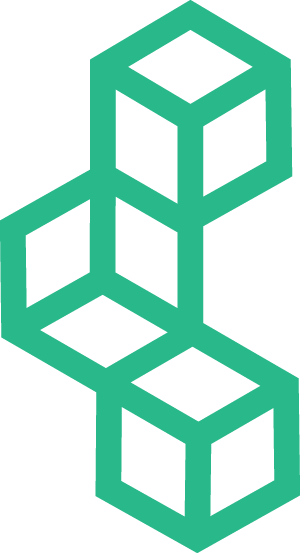How can you improve capital planning for K-12 school facilities?
It's all about accurate data! How you collect it, how you analyze it, and how you present it.
Accurate reporting is critical when the next steps involve procuring financial, programmatic, and staff resources.
As a K-12 Facility Manager, you likely use various tools and data systems essential to the operation of your physical assets and facilities. Managing K-12 school buildings is a process that involves using the right tools at the right time to achieve optimal results.
One of the most important tools is your organization's reporting system. Data collection, management, and storage are integral to successful K-12 school facility capital planning.
Here we discuss the top 3 ways accurate reporting improves capital planning for K-12 school facilities.
1. Maximize Productivity and Efficiency
Maximizing the operational output of your K-12 school facilities and physical assets while simultaneously minimizing operating and capital costs is always a balancing act for the K-12 facility team. To achieve this, an intelligent system that incorporates real-time reporting and offers data visualization is highly beneficial.
To understand how efficient or inefficient your maintenance practices are, you need to measure your team's completed work orders against the total number of work orders filed. This simple data set will illuminate whether your maintenance operations are adequate or if too much backlog is stalling your school's projects.
Here's how to improve your preventive maintenance program.
These insights will also reveal the speed at which repairs are completed. This is an easy way to manage downtime while improves productivity. Data collected using facilities management software is vital for swiftly identifying potential operational weaknesses and fixing them well before becoming a problem.
2. Get Your Projects Funded
In general, K-12 facility managers depend on building administrators and finance departments to determine operations budgets and future capital expenditures. Thus, demonstrating that every K-12 facility manager and capital planner should become an expert at extracting functional operations data and using it to demonstrate efficiency.
Establishing the right metrics and explaining your capital projects with the correct financial analysis terms is critical to ensuring your projects get funded and approved. In addition, without suitable economic models, it can be challenging to explain accurately to financial stakeholders why specific projects need financing.
Discover how Intellis makes asset management and capital planning more efficient.
To successfully sell your capital improvement project: it is essential to present a compelling business case backed by intelligent data. In addition, facility managers must understand the hands-on aspects of operations, including the financial underpinning.
A facility management system with robust data collection capabilities will help you demonstrate your facility's return on investment, return on assets and return on equity – all of which are affected by how you run your building.
With a facilities management system like FOUNDATION.Plans, it is easy to convert your vision into operational objectives and to link your capital project plan to individual performance, strategic planning while highlighting the outcomes for ongoing improvement.
3. Future-Proof With Data Analytics
Buildings and infrastructure begin to deteriorate as soon as they come into use. As school buildings age, they go through a process of deterioration. Five life-cycle stages correlate to asset renewal:
- Prenatal: less than one year
- Childhood: 1–16 years
- Adolescence: 17–29 years
- Adulthood: 30–49 years
- Old Age: 50-plus years
K-12 facility managers and capital planners need to know when more extensive repair and maintenance issues will begin within each of these phases. It is possible to significantly improve the efficacy of your capital planning through collecting data on equipment life cycle, repair schedules against industry standards and benchmarks.
These factors can influence when you need to have money saved up for a significant renovation or replacement. Knowing these financial timetables will make the capital planning process much smoother, thereby ensuring your department keeps to a schedule.
Data is critical in helping K-12 facility managers determine the best approach to motivating supervisors and technicians to stay on track with a high-functioning preventative maintenance program.
One of the best features of FOUNDATION is that it is a cloud-based data collection system, which gives you the ability to update physical asset information in real-time or even on the go.
Please read our guide to mobile technology for facility managers.
Mobile data-collection technology empowers K12 capital planners and facility managers in many ways, including managing work process flows, tracking physical assets, and supervising building facilities. In addition, mobile tech helps facilities managers to communicate, collaborate, and manage workloads more efficiently.
The FOUNDATION Solution for Successful Strategic Planning
Successful strategic planning connects vision, priorities, people, and the physical institution to a flexible evaluation system, decision-making, and action. It shapes and guides the entire k to 12 education organization as it evolves over time and into the broader community context.
FOUNDATION is the only software of its kind to provide configurable systems for evaluating myriad aspects of facilities. That includes reports based on condition assessments, project planning for renovations and updates, spending oversight, and capital planning to align your needs and goals to your budget correctly.
FOUNDATION has been proven successful on over $50 billion in building and infrastructure plans ranging from large and small environments. In addition, it continuously improves budgets using feedback from project history.
With these kinds of tools, k-12 school facilities of all sizes are empowered to plan for changes and maintenance, better serve their boards, budgets, employees, and most importantly, their students.
Are you interested in learning how Intellis software can improve K12 School Facility Planning?


